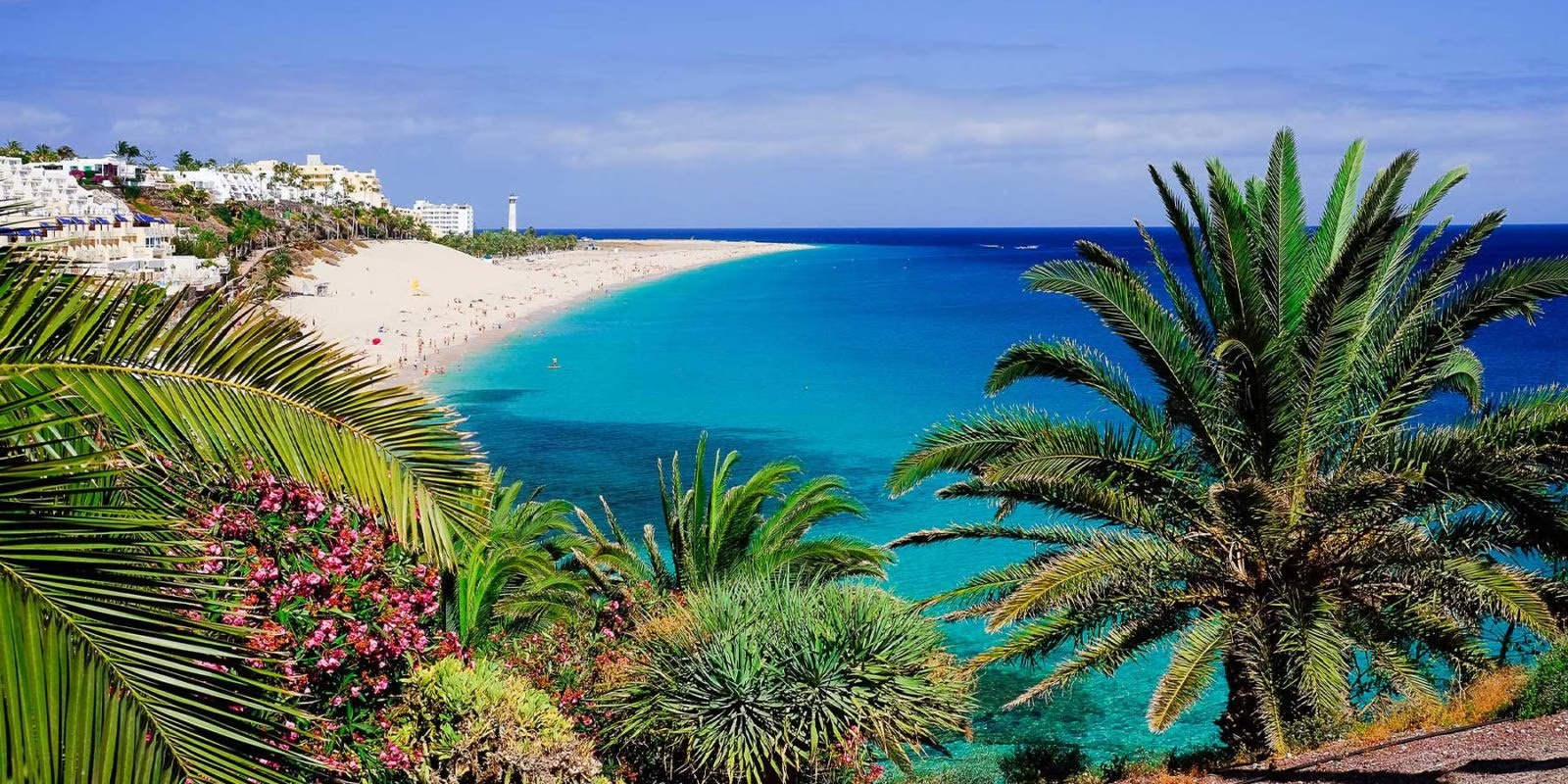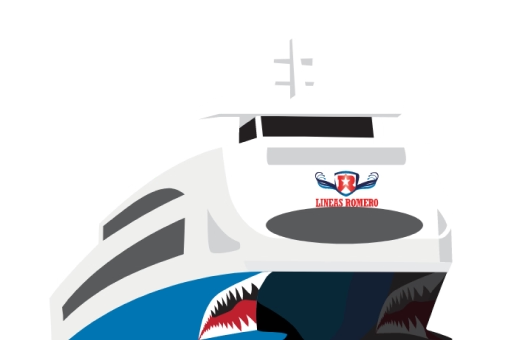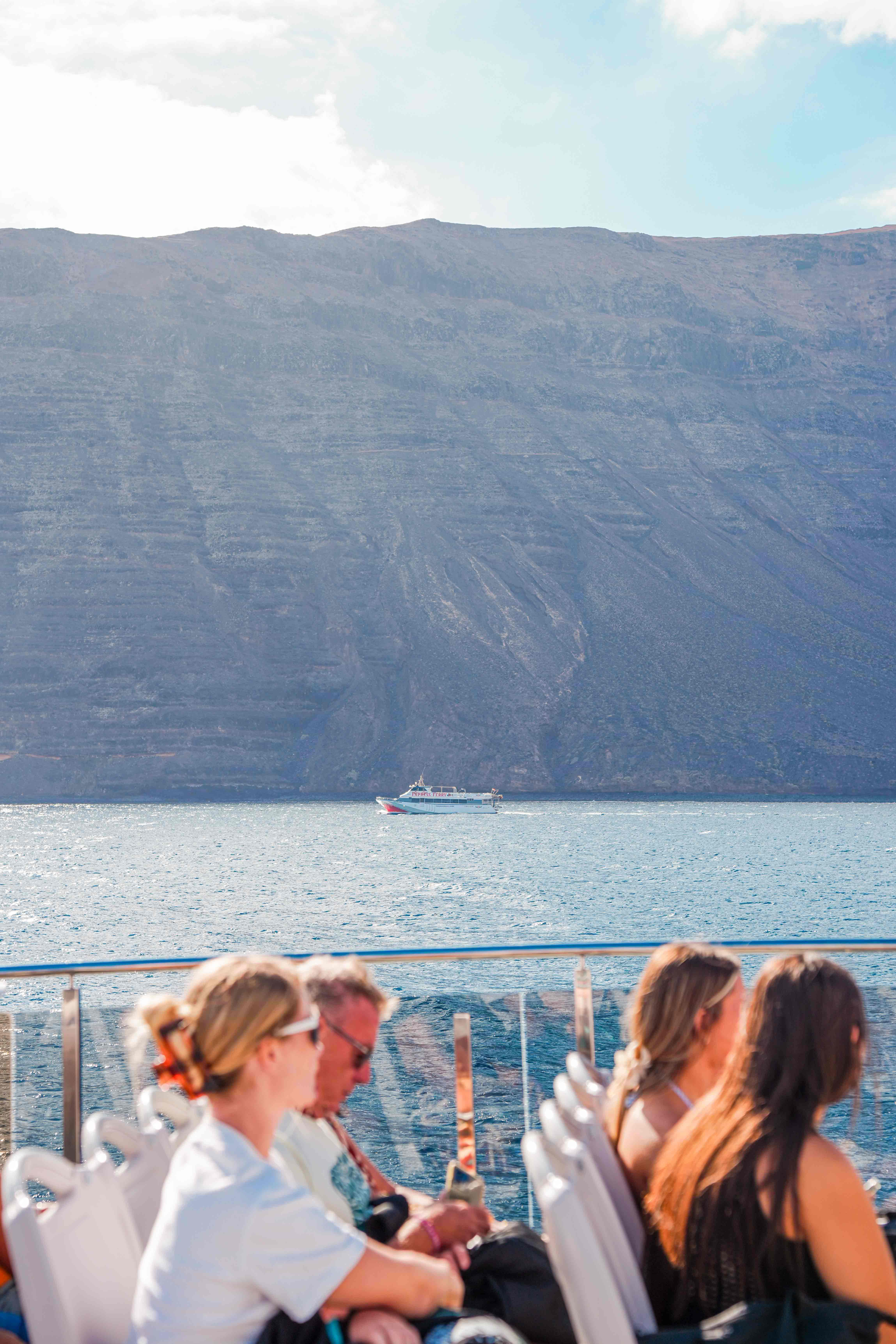
10 Curious Facts About Fuerteventura
When you hear the name Canary Islands, images of sun, beaches, and good weather probably come to mind.
What we commonly call paradise.
But if we tell you that each of the eight islands that make up the Canary archipelago is different, and seeing one means you've only seen that island, you might not believe us.
From a jet-black island dyed by solidified lava to another so green it looks like an oasis in the middle of the sea, passing through endless beaches, giant cliffs, timeless villages, and fairy-tale mountains.
You have plenty to choose from, not just among eight islands but among all the variety each one offers.
And since it's very complicated to describe all the islands in one article, we want to simplify your life by telling you curiosities about Fuerteventura, a tropical paradise less than 3 hours by flight from the Iberian Peninsula.
Do you want to learn more about Fuerteventura? Let's get started!
Yes, if you want to know the beginning of it all, you have to come here.
Fuerteventura was the first Canary Island to emerge from the ocean almost 20 million years ago, but its formation began much earlier, in the depths of the ocean, where the basal complex originated over 100 million years ago.
The theory says this basal complex should remain, as its name suggests, at the base of the island, in the depths, but practice is capricious and decided to show it to the world.
So, by geological chance, in Fuerteventura, you can visit the oldest basal complex on the planet's surface, and you can see it in the Ajuy Caves.
Fuerteventura is the second-largest island in the archipelago and the closest to the African continent.
It has almost 362 km of coastline, of which 77 km are beaches, most of golden sand, making it the island with the most extensive beach coastline in the archipelago.
This fact is not gratuitous, and that's why Fuerteventura has earned its reputation as the island with the best beaches in the Canary Islands, because there are beaches for all tastes, from the most touristy to the most remote and wild.
There are so many that you'll never feel like you're in a crowded place, not even during high season.
Majorero cheese was the first Spanish cheese to obtain the Designation of Origin in 1996, and since then, it has received countless awards due to its intense and unique flavor.
It is made following the same recipe used by the Canary aborigines two thousand years ago, and you can eat it fresh, semi-cured, and cured, made from the milk of the Majorera goat, native to the island.
Additionally, its exterior can be covered with paprika or gofio, giving it subtle aromas. To try it, any corner of the island will serve it to you, a delicacy within everyone's reach.
On Cofete Beach, on the west coast, south of the island, apart from finding a wild beach with spectacular beauty, you'll notice a large solitary farmhouse in the middle of the hillside.
It is Villa Winter, owned by the German Gustav Winter, who built this house at the beginning of the last century and, according to the legends surrounding it, served as a base and refuge for Nazi soldiers.
True or not, the aura of mystery surrounding it makes it very attractive to tourists and locals alike.
And we continue with the mysteries of Fuerteventura because it has many. There's a mountain in the northern half of Fuerteventura believed to have been sacred and venerated by the island's aborigines.
This mountain is Tindaya, the most emblematic natural monument of Fuerteventura. It has great geological interest due to the quality of the stone that forms it, as well as historical and archaeological interest due to the number of podomorphs found on it.
Podomorphs are rock carvings in the shape of feet made directly on the rock. There are around 300 podomorphs on Tindaya, near the summit, all carved by the Majos, ancient aborigines of Fuerteventura.
To protect this marvel, climbing the sacred mountain is strictly prohibited.
In Villaverde, in the municipality of La Oliva, lies one of the oldest volcanic tunnels in the Canary Islands, over a million years old and 648 meters long.
Here it is known as Cueva del Llano, but its age is not its only peculiarity.
Inside the cave, small blind and pigmentless spiders have developed, unique in their species and only living here.
And the most peculiar thing is that they are only present in the last two hundred meters of the cave, the only part that has not been altered to facilitate visitor access.
In the 1960s, a resident of Fuerteventura brought two of these friendly rodents as pets. If they had imagined what they could cause, they surely would have left them in their place of origin and chosen a very different souvenir.
One of the squirrels escaped, and the other was released, and in just over three years, they had colonized a nearby hillside, and today they are a plague throughout Fuerteventura. Being a non-native species to the island, they endanger its ecosystem and directly affect endemic biodiversity.
So if you see one, take photos if you want, but never feed them. Remember that they are an invasive species, and you'll see many signs around the island reminding you not to forget.
We've already told you that Fuerteventura has the longest beaches in the archipelago, so it shouldn't surprise you that the star sports here are water sports.
And the gold medal goes, without a doubt, to surfing, closely followed by windsurfing and kite surfing.
Riding the waves has always been an obsession for everyone living near the sea, and here it's a way of life.
That's why Fuerteventura is known as the European Hawaii. If you visit the island, you have to try gliding over the sea on a board; you'll surely repeat.
Let yourself be transported to Sotavento Beach, in the south of the island.
And now look at the sea; you'll see how the moon influences the tides because on this beach, when there's a full or new moon, the tide goes down so much that it reveals a sand tongue usually hidden by water.
This sand tongue separates the sea from a shallow but considerable-length lagoon, making it perfect for kids to splash around safely or for you to start windsurfing or kite surfing in more controlled conditions than in open sea.
And let yourself be amazed by the night skies of Fuerteventura, which since 2015 became a Starlight Reserve, denoting their quality and the island's commitment to preserving them.
Thus, the Canary Islands have 3 of the 7 global Starlight reserves, a true luxury for star lovers.
What we commonly call paradise.
But if we tell you that each of the eight islands that make up the Canary archipelago is different, and seeing one means you've only seen that island, you might not believe us.
From a jet-black island dyed by solidified lava to another so green it looks like an oasis in the middle of the sea, passing through endless beaches, giant cliffs, timeless villages, and fairy-tale mountains.
You have plenty to choose from, not just among eight islands but among all the variety each one offers.
And since it's very complicated to describe all the islands in one article, we want to simplify your life by telling you curiosities about Fuerteventura, a tropical paradise less than 3 hours by flight from the Iberian Peninsula.
Do you want to learn more about Fuerteventura? Let's get started!
1. Fuerteventura holds the oldest secret of the Canary Islands
Yes, if you want to know the beginning of it all, you have to come here.
Fuerteventura was the first Canary Island to emerge from the ocean almost 20 million years ago, but its formation began much earlier, in the depths of the ocean, where the basal complex originated over 100 million years ago.
The theory says this basal complex should remain, as its name suggests, at the base of the island, in the depths, but practice is capricious and decided to show it to the world.
So, by geological chance, in Fuerteventura, you can visit the oldest basal complex on the planet's surface, and you can see it in the Ajuy Caves.
2. Beach, beach, and more beach
Fuerteventura is the second-largest island in the archipelago and the closest to the African continent.
It has almost 362 km of coastline, of which 77 km are beaches, most of golden sand, making it the island with the most extensive beach coastline in the archipelago.
This fact is not gratuitous, and that's why Fuerteventura has earned its reputation as the island with the best beaches in the Canary Islands, because there are beaches for all tastes, from the most touristy to the most remote and wild.
There are so many that you'll never feel like you're in a crowded place, not even during high season.
3. Cheese with designation of origin
Majorero cheese was the first Spanish cheese to obtain the Designation of Origin in 1996, and since then, it has received countless awards due to its intense and unique flavor.
It is made following the same recipe used by the Canary aborigines two thousand years ago, and you can eat it fresh, semi-cured, and cured, made from the milk of the Majorera goat, native to the island.
Additionally, its exterior can be covered with paprika or gofio, giving it subtle aromas. To try it, any corner of the island will serve it to you, a delicacy within everyone's reach.
4. Mysterious house
On Cofete Beach, on the west coast, south of the island, apart from finding a wild beach with spectacular beauty, you'll notice a large solitary farmhouse in the middle of the hillside.
It is Villa Winter, owned by the German Gustav Winter, who built this house at the beginning of the last century and, according to the legends surrounding it, served as a base and refuge for Nazi soldiers.
True or not, the aura of mystery surrounding it makes it very attractive to tourists and locals alike.
5. Sacred mountain and enigmatic footprints
And we continue with the mysteries of Fuerteventura because it has many. There's a mountain in the northern half of Fuerteventura believed to have been sacred and venerated by the island's aborigines.
This mountain is Tindaya, the most emblematic natural monument of Fuerteventura. It has great geological interest due to the quality of the stone that forms it, as well as historical and archaeological interest due to the number of podomorphs found on it.
Podomorphs are rock carvings in the shape of feet made directly on the rock. There are around 300 podomorphs on Tindaya, near the summit, all carved by the Majos, ancient aborigines of Fuerteventura.
To protect this marvel, climbing the sacred mountain is strictly prohibited.
6. Unique cave fauna
In Villaverde, in the municipality of La Oliva, lies one of the oldest volcanic tunnels in the Canary Islands, over a million years old and 648 meters long.
Here it is known as Cueva del Llano, but its age is not its only peculiarity.
Inside the cave, small blind and pigmentless spiders have developed, unique in their species and only living here.
And the most peculiar thing is that they are only present in the last two hundred meters of the cave, the only part that has not been altered to facilitate visitor access.
7. The Moorish squirrel: a "friendly" and dangerous invasion
In the 1960s, a resident of Fuerteventura brought two of these friendly rodents as pets. If they had imagined what they could cause, they surely would have left them in their place of origin and chosen a very different souvenir.
One of the squirrels escaped, and the other was released, and in just over three years, they had colonized a nearby hillside, and today they are a plague throughout Fuerteventura. Being a non-native species to the island, they endanger its ecosystem and directly affect endemic biodiversity.
So if you see one, take photos if you want, but never feed them. Remember that they are an invasive species, and you'll see many signs around the island reminding you not to forget.
8. Water sports as a lifestyle
We've already told you that Fuerteventura has the longest beaches in the archipelago, so it shouldn't surprise you that the star sports here are water sports.
And the gold medal goes, without a doubt, to surfing, closely followed by windsurfing and kite surfing.
Riding the waves has always been an obsession for everyone living near the sea, and here it's a way of life.
That's why Fuerteventura is known as the European Hawaii. If you visit the island, you have to try gliding over the sea on a board; you'll surely repeat.
9. Sand tongue and infinite lagoon
Let yourself be transported to Sotavento Beach, in the south of the island.
And now look at the sea; you'll see how the moon influences the tides because on this beach, when there's a full or new moon, the tide goes down so much that it reveals a sand tongue usually hidden by water.
This sand tongue separates the sea from a shallow but considerable-length lagoon, making it perfect for kids to splash around safely or for you to start windsurfing or kite surfing in more controlled conditions than in open sea.
10. Lie down and look at the stars
And let yourself be amazed by the night skies of Fuerteventura, which since 2015 became a Starlight Reserve, denoting their quality and the island's commitment to preserving them.
Thus, the Canary Islands have 3 of the 7 global Starlight reserves, a true luxury for star lovers.



